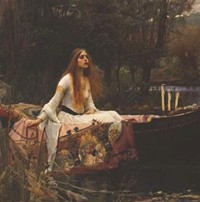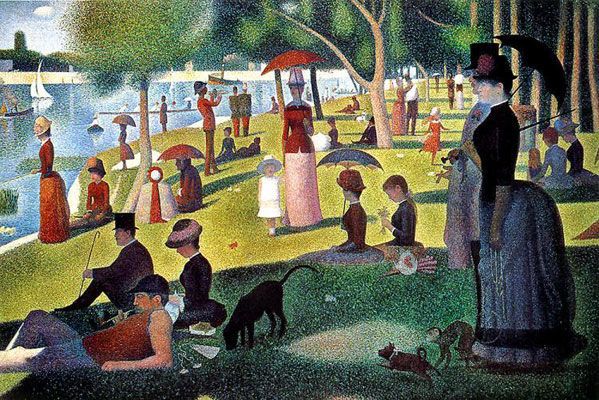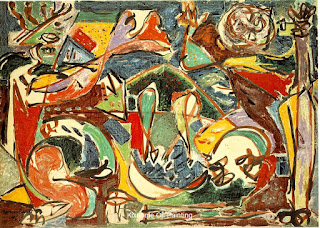HISTORY OF ARTS
Thank you for finding your way to my blog. everyone must be pretty excited to jump into the arts of drawing aren't you? but first, you should know about the history and development of arts. it is wonderful to see how much the arts of drawing had developed until now. Basically, drawing is the art or technique of producing images on a surface, usually paper, by means of marks, usually of ink, graphite, chalk, charcoal, or crayon.
Below is the timeline of drawing chronologies around the world:
Stone Age (30,000 b.c.–2500 b.c.)
Did you know?
Archaeological research shows that only certain people lived in a painted cave. It is believed that the cave was inhabited by a group of shamans who perform rituals in the cave. Those drawing were connected to the social and spiritual ritual of their community. The oldest cave art was located in Maros, Indonesia which dated 40000 years old. it's pretty scary but that's how the arts of drawing was born.
During this age, art was meant as a way to glorify the rulers and their connection to divinity. The artist use natural resources such as stone, shells, alabaster and marble to make art. Its amazing how they turn natural resources and turn it into arts.
As for Egyptian, their drawings focus more on afterlife such as tomb painting because they believes that there is another life after death. Like how we see in The Mummy movie.
Greek art focus on balance, perfect proportions such as architectural orders. The Conquest of Alexander The Great also happened during this era which rapids the development of arts as well.
For your information, Roman’s art was practical and down to earth such as the Augustus of Primaporta, Colosseum, Trajan's Column, Pantheon. The empire of Rome falls on a.d 476.
As we all know, Buddhism focus on serene, meditative art, and Arts of the Floating World. The openings of silk road on the first century contributed to the development of society and arts. Buddhism also spreads to China and Japan which influenced the art style of both country.
Birth of Islam on a.d 610 and the beginning of Islam conquest on a.d 632- 732.
From about the 400's to the 1400's, art was an instrument mainly to honor God and to teach religions. These arts merges in the illustrations of Bibles and religious books written by monks. Drawings also help artist to keep record of images they always used. Drawings of people, animals and figures were kept in a book and used as reference to the artists.
People appreciates drawing more at this time. The production of drawings also increased and considered as the foundation for work in all the arts. Art students were trained and the portrayal of the human figure became increasingly realistic as the artists carefully studied the physical structure of the human body for the first time and began to draw from nude models. In Italy, paintings were produced to decorate the interiors of churches, palaces, and public buildings.
Venetian and Northern Renaissance (1430–1550)
Mannerism was the art movement that took place immediately after the Renaissance during the 16th century. Instead, artists were more interested in creating an interesting composition and expressing an emotion. The second element sometimes seen in Mannerism is symbolism. Mannerist artists would use visual allegories and complex meanings in order to appeal to a specific, wealthier audience, instead of making art for public.
Baroque (1600–1750)
The precision and control of Renaissance drawings were replaced in the Baroque period by livelier forms and by bolder use of materials. Chalk and pen lines became freer and more flowing. Washes of ink and water colour were also used. Arts also was used as weapon in religious conquest.
Neoclassical (1750–1850)
Is an art that recaptures Greco-Roman grace and grandeur The industrial revolution occur at this time and the awareness of labor rights significantly increased.
For your information, Romanticism emphasized on nature, the humanity, justice and emotions rather than intellectual which contrast the Neoclassical art.
Realism (1848–1900)
The arts concentrated on celebrating working class and peasants
Can be considered as the first movement towards Modern arts.
A much more contemporary arts and the role of painting is a window towards the world instead of the painter's mind.
Harsh colors and flat surfaces (Fauvism); emotion distorting form
- Pre– and Post–World War 1 art experiments: new forms to express modern life. The noticeable artist was Picasso, Braque and Boccioni.
Just like the name, the art explores more on the unconscious such as dreams and things considered ridiculous.the noticeable events during this era was The GreatDepression (1929–1938); World War II (1939–1945) ,Nazi horrors and atomic bombs dropped on Japan (1945)
Abstract Expressionism (1940s–1950s) and Pop Art (1960s)
Postmodernism and Deconstructivism (1970– )
Pencil was manufactured on this era and preferred by many artists. They also started to paint directly on the canvas without using preparatory drawings or taking preparatory classes. Many drawing styles were developed during this time.
Why Drawing is important?
Do you think drawing is important? have you ever thought of why people start drawing in the first place? Drawing is the roots of socialization. It used to be a communication tools during the Stone Ages as people don’t know how to utter words. Can you imagine how these people communicate? Many discoveries had been made which shows that people in the stone age use symbols to communicate. So, drawing holds many benefits to the
people who practiced it or even one who does not. The discoveries of the oldest cave paintings in the Island of Indonesia proved that the beginnings of human’s intellects had started over 40000 years ago. Another significance of drawing is:
people who practiced it or even one who does not. The discoveries of the oldest cave paintings in the Island of Indonesia proved that the beginnings of human’s intellects had started over 40000 years ago. Another significance of drawing is:
1. To give pleasure as ends in themselves- people who appreciate the art of drawing will gain satisfaction when they successfully created a masterpiece.
2. To describe or record something- drawing is one of the methods used by ancient people to record information as they did not possess any technologies in the meantime.
3. To visualize thought and work something out- drawing came from imagination which was channeled straight from the brain. Drawing can help us to visualize something even better and draw it on a piece of paper.
4. To provide a pattern to follow or give instructions how to make something- figures and drawing were useful in instructions because we understand better from what we see compared to what we read.
'Let whoever may have attained to so much as to have the power of drawing know that he holds a great treasure.’
Michelangelo 1452 – 1519
'Beautiful colors can be bought in the shops on the Riatlo, but good drawing can only be bought from the casket of the artist’s talent with patient study and nights without sleep'
Tintoretto (1518 - 1594)



















No comments:
Post a Comment